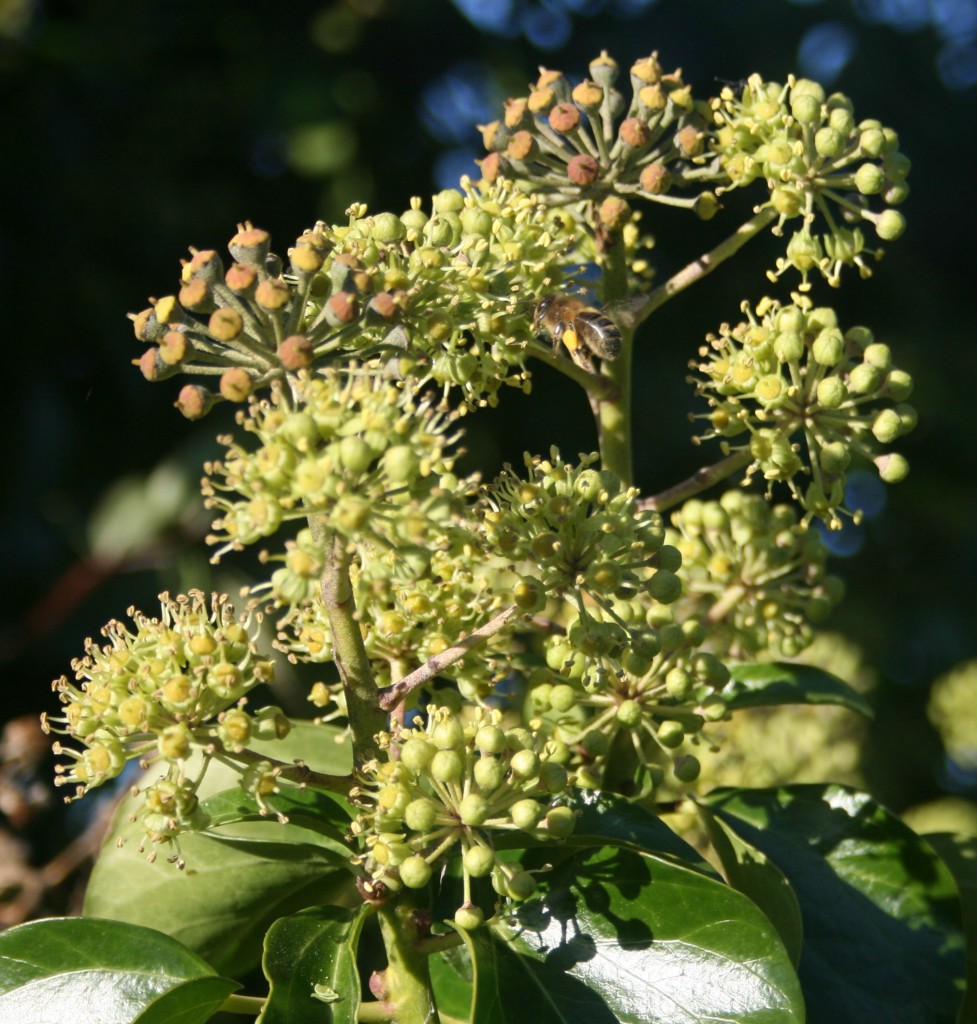Winter is coming but when the temperatures is up – 14 degrees C or so – the bees will continue to work the ivy (Hedera helix) especially in sunny intervals. It flowers between September and November – even December in a very mild year. They can take quite a crop from the ivy and it is great fodder for the winter. You will know if your bees are working it because there will be lots of yellow pollen going in which will give the bees a great boost Click here for a pollen load picture or click the photo below for a close up. Standing by the hives the reek of the ivy honey can be very strong.

Ivy honey is quite dark amber in colour and has a strong, medicinal flavour you would think it has to be a cure for something; it can only be a matter of time before somebody does the research.
In the meantime, folklore has it that it may be good for persistent coughs and cataaarrrrggghhh.
For those contemplating taking some ivy honey despite that – there are two ways to go about it. Either take it as soon as possible after (or even during) a flow, as you would with the oilseed, and extract very quickly before it granulates. Or, if it has already granulated – cut the comb from the frames, pack into a bucket/buckets and heat gently in a water bath or warming cabinet at about 45 degrees for 24 hours or until the honey melts and the wax collapses. Then either strain the wax out or push it through a heather press. If using an extractor clean it out as soon as possible because the honey will granulate in no time at all and you’ll have the devil of a job to clean it.
After bottling, the rank flavour does seem to mellow and the flavour is closer to that of ling heather. Or perhaps I’m getting a taste for it.
Click here for more on how to take a crop of ivy honey
Click here for Bee Trees – Ivy
Click here for ivy honey cold cure recipe
